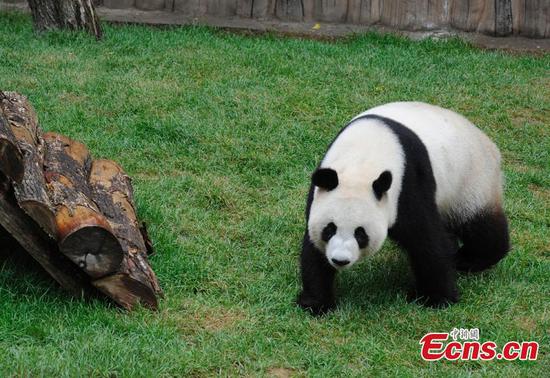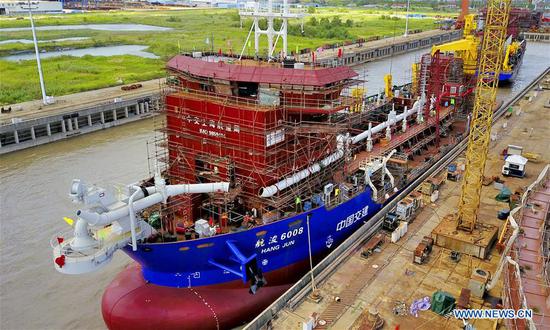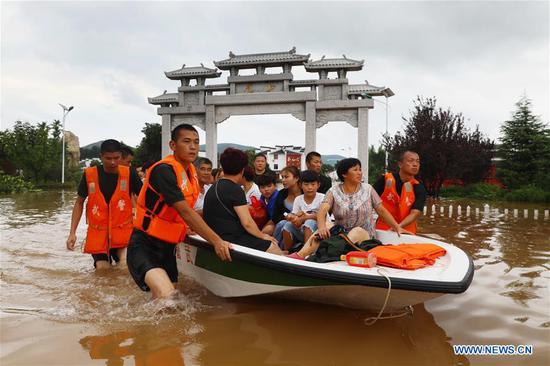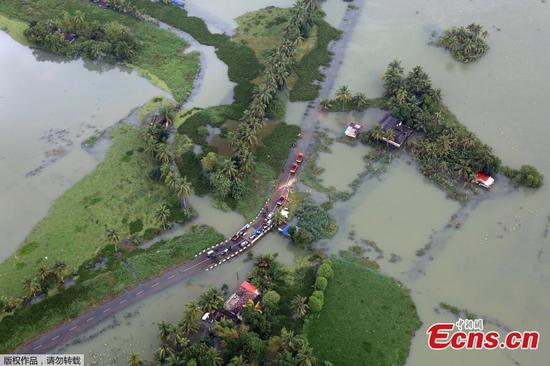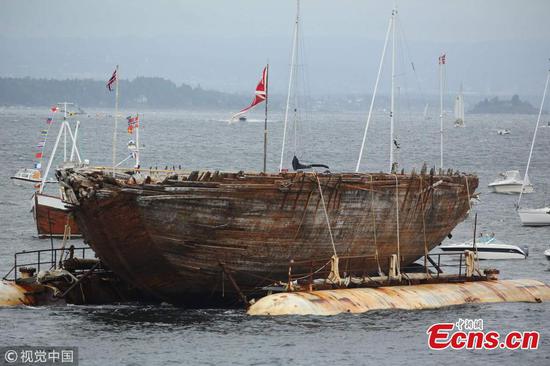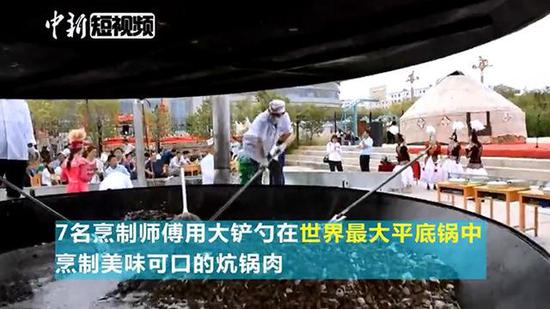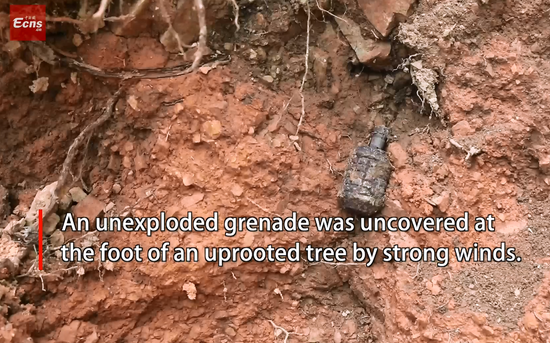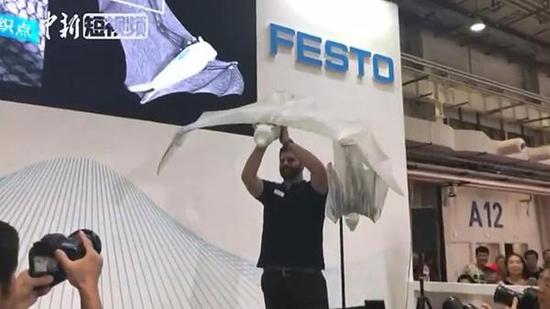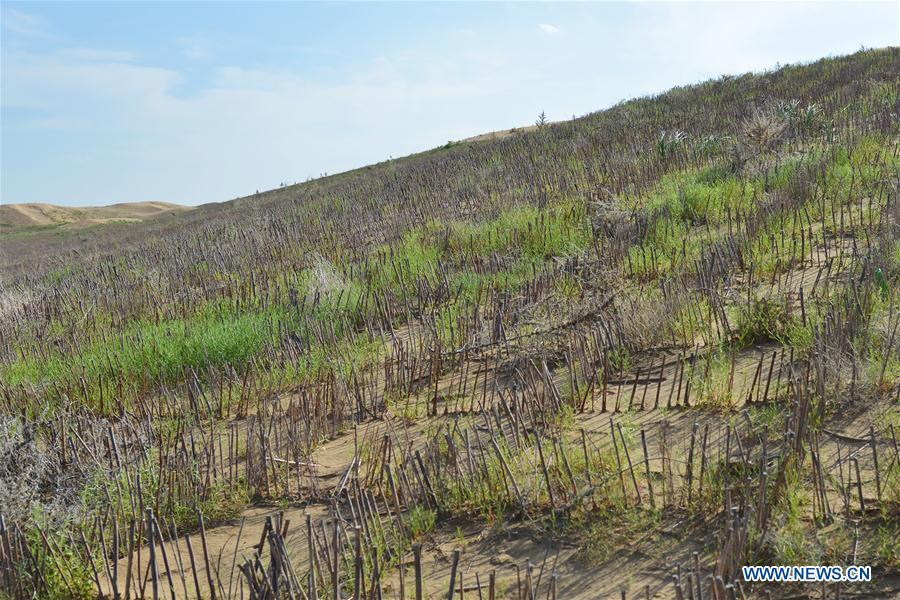
Photo taken on July 26, 2018 shows sand barriers along a new road through the Kubuqi Desert in Hangjin Banner, Erdos City, north China's Inner Mongolia Autonomous Region. Thanks to the local government's efforts to tame the Kubuqi Desert, in 1999, a 115-km-long highway S215, the first road through the middle of the desert, opened to traffic. A new road, which is to cut short the journey by 40 km, is also under construction now. (Xinhua/Zou Yu)
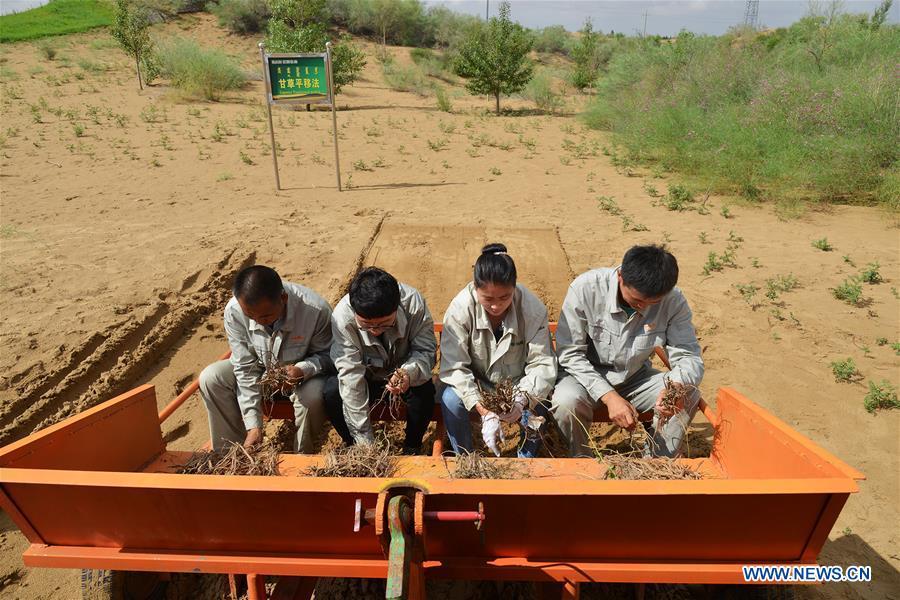
Technicians work at an plantation area at the Kubuqi Desert, north China's Inner Mongolia Autonomous Region, July 24, 2018. Kubuqi, the seventh largest desert in China, is a good example of China's success in alleviating desertification. About 6,460 square kilometers of the Kubuqi desert has been reclaimed in the last 30 years. (Xinhua/Lu Ye)
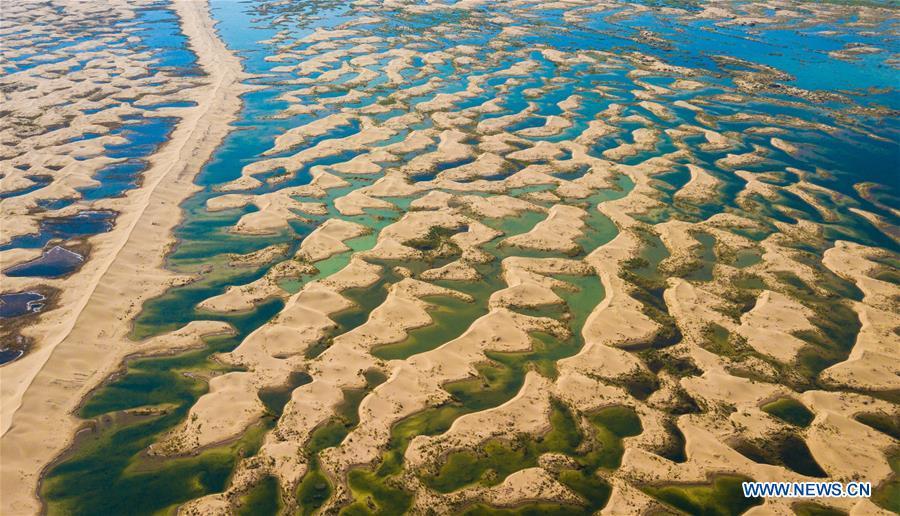
Aerial photo taken on June 9, 2018 shows wetlands formed by water of the Yellow River in flood period at the Kubuqi Desert in Hangjin Banner, north China's Inner Mongolia Autonomous Region. Kubuqi, the seventh largest desert in China, is a good example of China's success in alleviating desertification. About 6,460 square kilometers of the Kubuqi desert has been reclaimed in the last 30 years. (Xinhua/Peng Yuan)
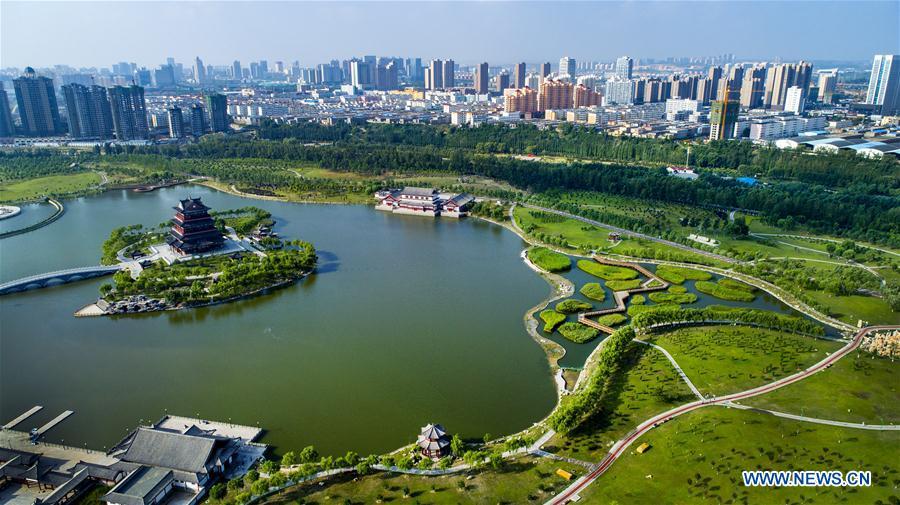
Aerial photo taken on Aug. 2, 2018 shows a view of the Yuxihe Park in the Yuyang District of Yulin City, northwest China's Shaanxi Province. The administrative region of Yulin City is located to the south of the Maowusu Desert. Environment protection measures have curbed the expansion of the desert and then witnessed the retreat of the desert as a result of the increase in planted forests and grasslands after reducing and stopping farming and animal husbandry. (Xinhua/Tao Ming)
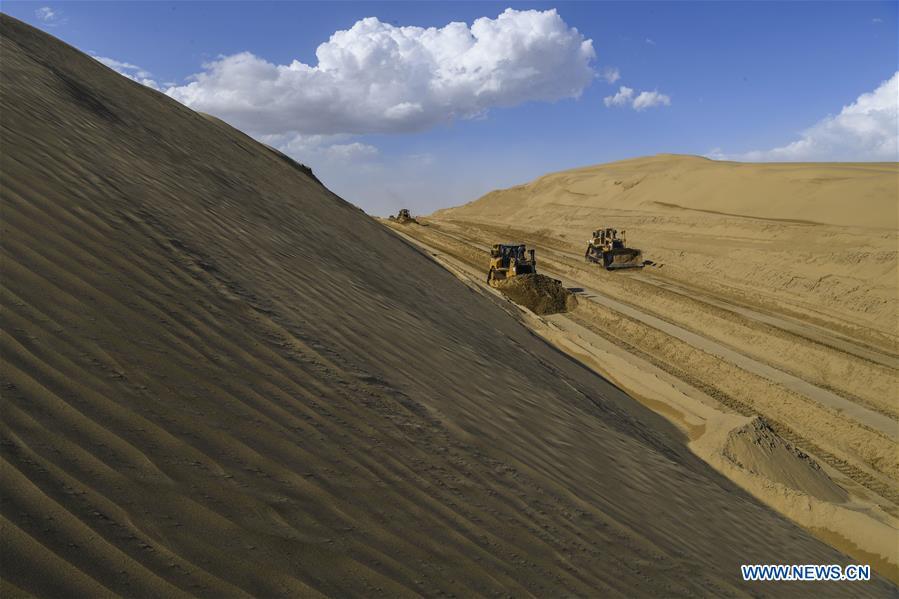
Vehicles work at a desert road construction site in Taklimakan desert in northwest China's Xinjiang Uygur Autonomous Region, July 5, 2018. An over 300-km-long desert road, linking Xinjiang's Yuli County to remote Qiemo County, is now under construction. It's the third that-kind-of road crossing China's largest desert Taklimakan nicknamed "the Sea of Death" in China. (Xinhua/Hu Huhu)
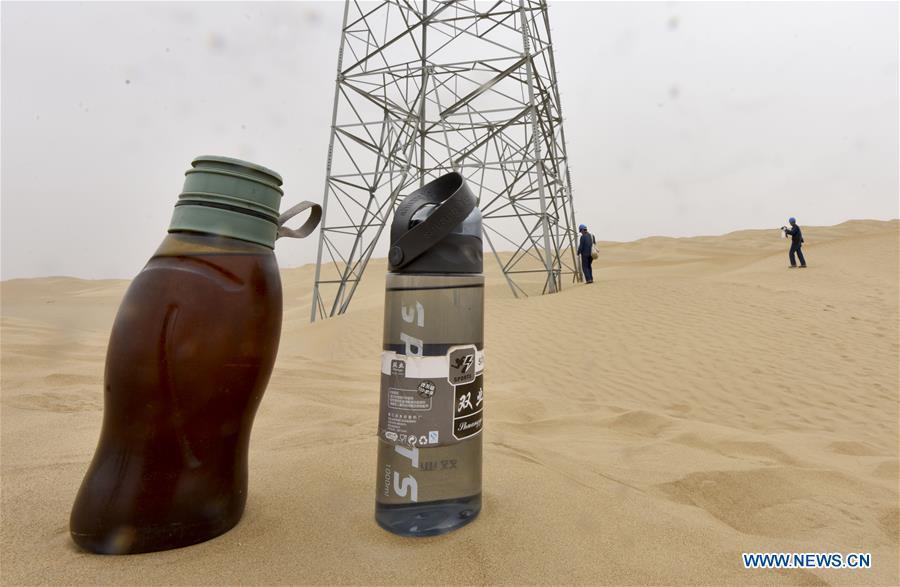
Photo taken on June 13, 2018 shows two bottles of water for linemen as they patrol along the Luntai-Tazhong-Qiemo-Ruoqiang power transmission and transformation line across the Taklimakan Desert in northwest China's Xinjiang Uygur Autonomous Region. The 563-kilometer power line across the Taklimakan Desert is the world's longest 220KV power transmission and transformation line. It was put into operation at the end of 2011, providing reliable power supply for local residents. The Taklimakan Desert, China's largest, is called "the sea of death". (Xinhua/Zhao Ge)
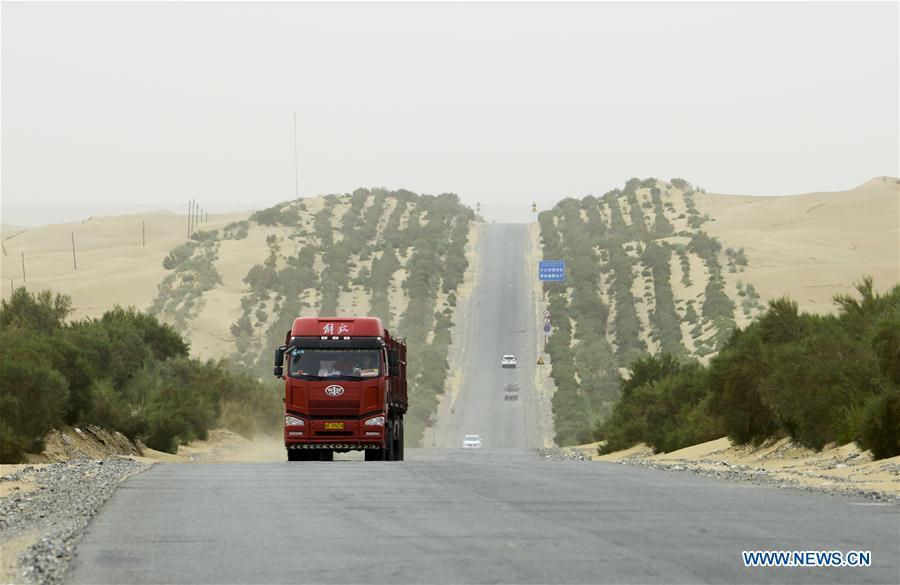
Cars run on the first highway in Taklimakan Desert in northwest China's Xinjiang Uygur Autonomous Region, June 12, 2018. The first highway across the Taklimakan, running 522 kilometers from Lunnan in the north, to Minfeng county in the south, was opened to traffic in 1995. The second north-south road across the desert opened to traffic about a decade ago, cutting the distance between the two important regional cities of Hotan and Aral by 550 km and the travel time by about seven hours. (Xinhua/Zhao Ge)










